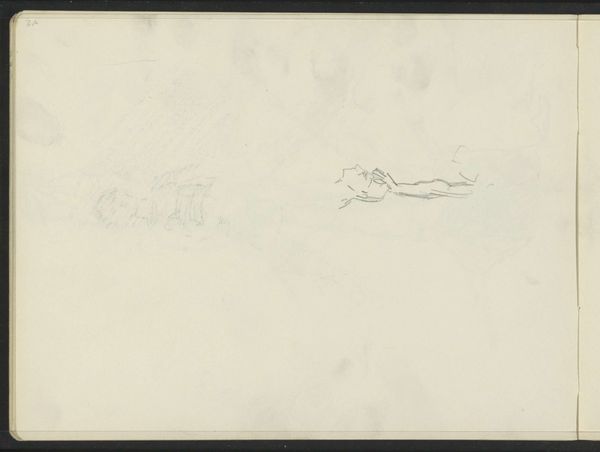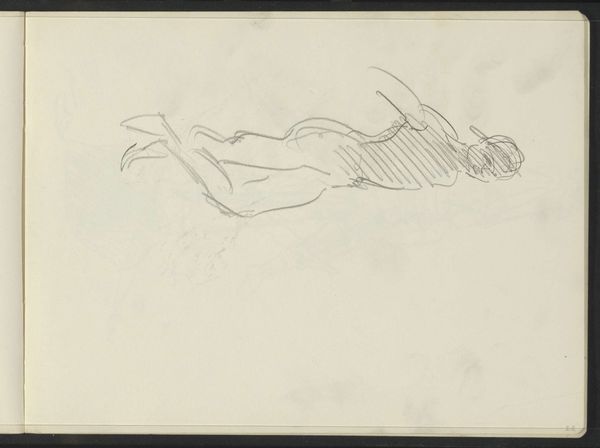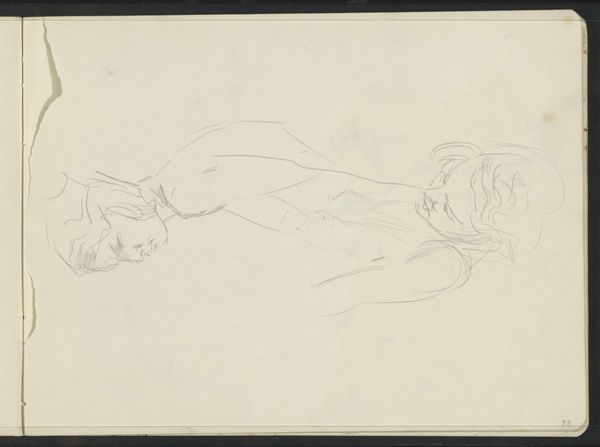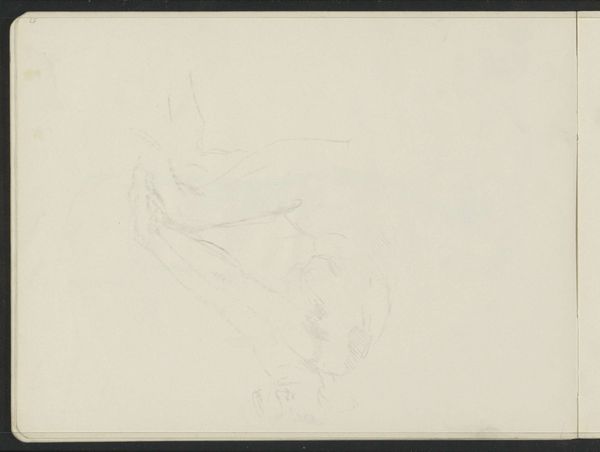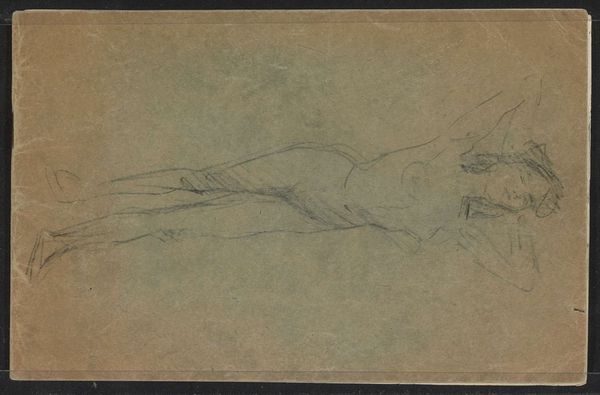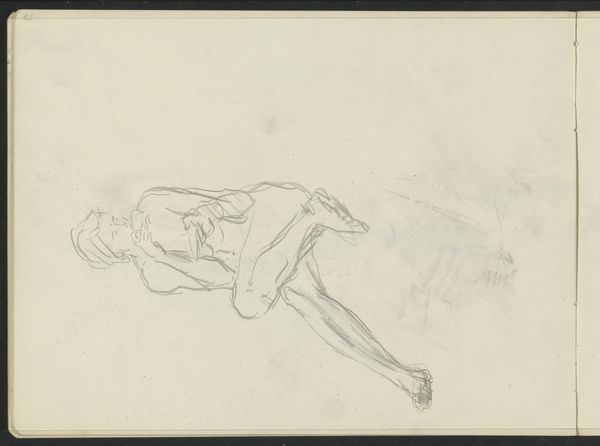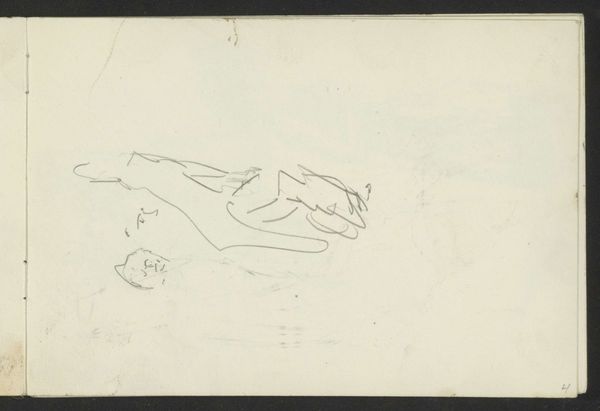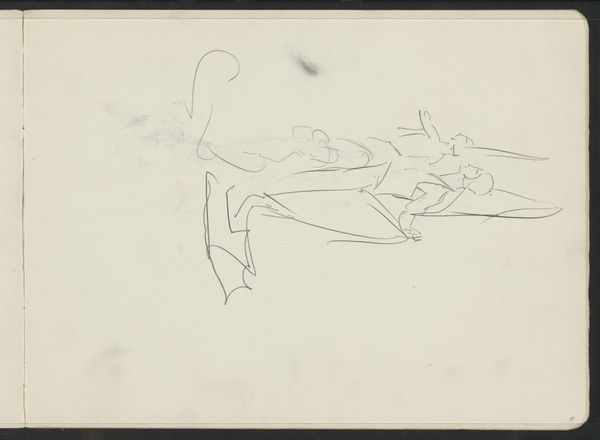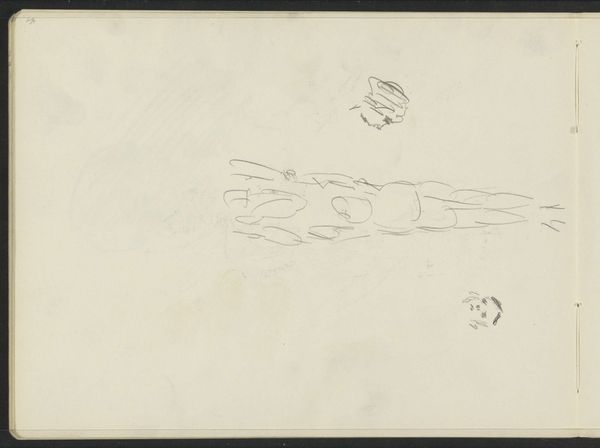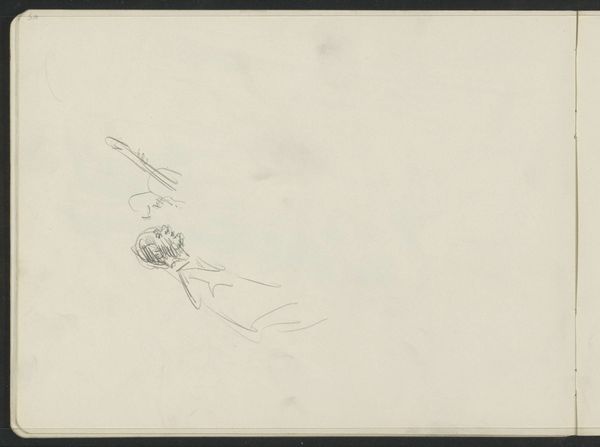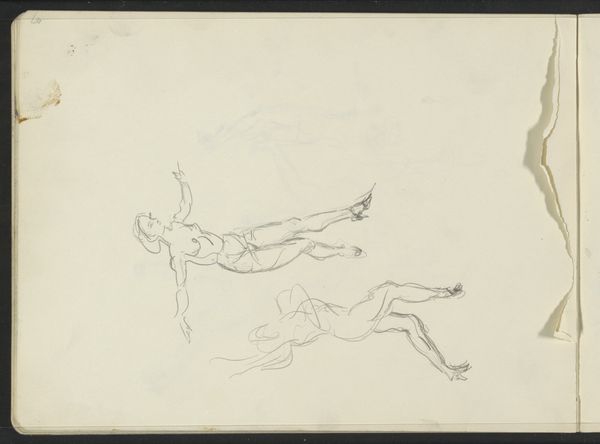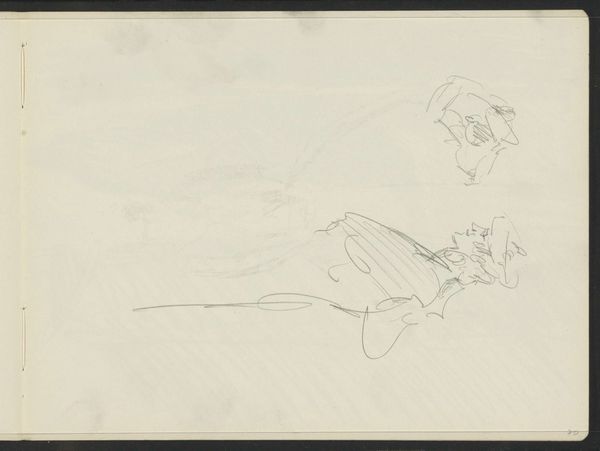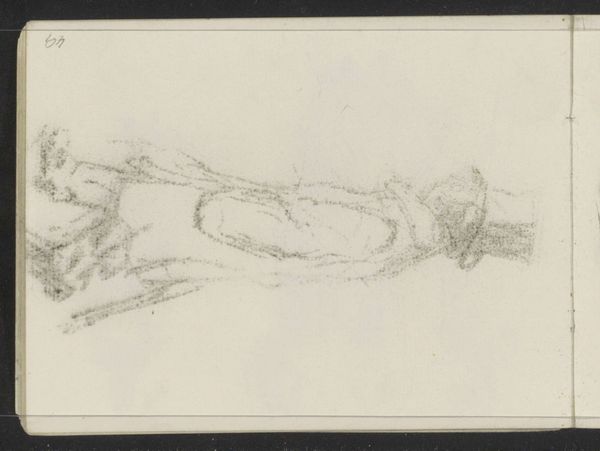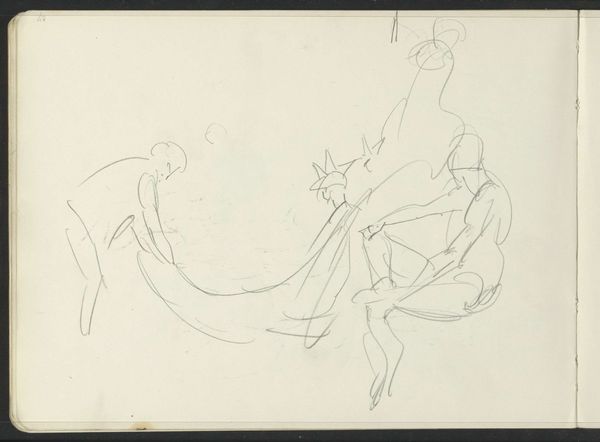
#
light pencil work
#
sketch book
#
hand drawn type
#
personal sketchbook
#
ink drawing experimentation
#
pen-ink sketch
#
pen work
#
sketchbook drawing
#
storyboard and sketchbook work
#
sketchbook art
Copyright: Rijks Museum: Open Domain
Curator: This is "Standing Woman with Raised Arm," a sketch by Isaac Israels, likely from the 1915s to 1925s. What's your initial reaction? Editor: It feels tentative, almost searching. The sketch lines are so delicate, creating a figure that’s more suggestion than solid form. There’s a fragility to the image. Curator: Indeed. Israels, known for his rapid capturing of fleeting moments, uses minimal means here. Look at the paper itself; its texture and probably its easy availability would have factored into his creative practice. He's making art directly from life, cheaply. Editor: This resonates with broader narratives of female representation during this era. The incompleteness, the ephemeral nature of the sketch… does it mirror societal perceptions of women – seen but not fully defined, their roles still in flux during a time of shifting social mores and gender dynamics? Curator: Perhaps. We could also consider Israels' own role as observer and recorder of modern life. The quick, efficient execution suggests he wasn't laboring for perfection or idealization. Rather, he’s exploring the everyday and trying to fix a particular gesture in space and time. Editor: It brings to mind labor conditions for women, specifically in art-related industries. Israels benefited from these cheaper modes of production, of models themselves; can we consider these class dynamics? How did their labor shape his own work and legacy? Curator: An interesting point to note is Israels' tendency to focus on modern women of the working class or even those living slightly bohemian lifestyles. Did this interest spring from something intrinsically liberatory, or was it also exploitative? It does not offer any simple answers to these types of ethical issues surrounding artistic work and its relationship to contemporary gender roles. Editor: Right. We have to acknowledge these contradictions, placing the work within these complicated ethical and social landscapes. We also need to investigate art education for women and artistic representation within wider discussions of gender and class disparities, during this crucial epoch in our social history. Curator: Thinking about his materials – readily available paper and pencil – this sketch provides us access to a form of artistic labor at its most efficient, which at this point almost represents pure observational study on Israels’s behalf. It does remind us about material scarcity throughout much of that era, an experience that had a large influence on creative workers throughout society at large. Editor: And it compels us to reflect on these figures caught between societal expectations and their own ambitions, or their need to be observed under very real socioeconomic and often gendered constraints of the day. Curator: I agree; by looking beyond aesthetic impressions into contexts of artistic production and class relations, we are much closer to a comprehensive view of both this drawing itself and a more intricate reading into Israels' wider practice. Editor: Exactly. Seeing beyond Israels' singular talent towards the social networks, labor relationships and gender conditions during this period permits us all more nuanced reflections around artistic labor more generally.
Comments
No comments
Be the first to comment and join the conversation on the ultimate creative platform.
